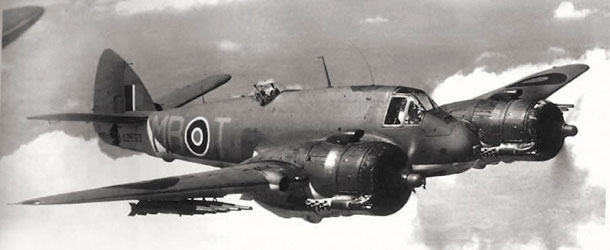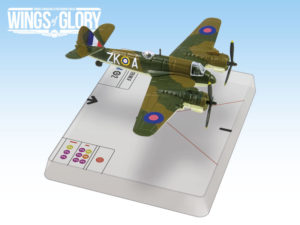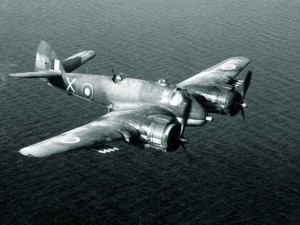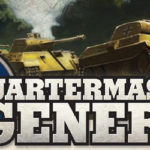Unlike the Beaufort, the Beaufighter had a long career and served in almost all theatres of WW2, first as a night fighter, then as a fighter bomber and eventually replacing the Beaufort as a torpedo bomber. Besides the United Kingdom, it was operated by other 12 countries.
The Beaufighter was the answer to the Messerschmitt Bf.110, the German long-range heavy fighter, that ruled the skies during the first years of the World War 2. Hurricanes and Spitfires were not able to counter the Messerschmitt Bf.110 supremacy, as they lacked the endurance for effective standing patrols. The result was the Bristol Beaufighter, which entered service a year after the outbreak of war.
This British two-engine fighter had a crew of two men and was initially armed with an impressive array of four 20mm cannon Hispano Mk III and six 7.7 mm Browning machine guns.
Since the Beaufighter used many components of the already-in-production Beaufort torpedo airplane, the implementation of the Beaufighter was quick and painless. In general, the differences between the Beaufort and Beaufighter were minor. The wings, control surfaces, retractable landing gear and aft section of the fuselage were identical to those of the Beaufort, while the wing centre section was similar apart from certain fittings. The bomb bay was omitted, and the cannons were mounted in the lower fuselage area. These were initially fed from 60-round drums, requiring the radar operator to change the ammunition drums manually, but given that it was an arduous and unpopular task, especially at night and while chasing a bomber, they were soon replaced by a belt-feed system.
When Beaufighters were developed as fighter-torpedo bombers, they used their firepower (often the machine guns were removed anyway) to suppress flak fire and hit enemy ships, especially escort and small vessels. The areas for the rear gunner and bomb-aimer were removed, leaving only the pilot in a fighter-type cockpit. The navigator/radar operator sat to the rear under a small Perspex bubble where the Beaufort's dorsal turret had been.
The Bristol Taurus engines of the Beaufort were not powerful enough for a fighter and were replaced by the more powerful Bristol Hercules. After finding out that this extra power presented problems with vibration, in the final design the designers decided to mount them on longer, more flexible struts, which extended from the front of the wings. This moved the centre of gravity of the aircraft forward - so the designers decided to move it back by shortening the nose, as no space was needed for a bomb aimer. With this change, most of the fuselage was behind the wing, and the center of gravity was restored to where it should be.
As production continued, several different versions appeared. Beaufighters were used in many theaters of war and for varied duties, performing particularly well in the Western Desert, thanks to their long range. Coastal Command of the RAF received several torpedo-carrying versions which were responsible for sinking a great deal of enemy ships. The last and most numerous was the superb Mk. X, which could carry a large torpedo or bombs and rocket projectiles, and claimed among its victories several German submarines.
When the last Beaufighter (SR919) left the Bristol Aeroplane Company's Weston-super-Mare factory on September 21, 1945, a total of 5,562 aircraft of this type had been produced in the United Kingdom. Of these some 1,063 were Mark Vls and 2,231 were Mark Xs. A variant of the aircraft, the Mk.21s, was also produced in Australia from 1944 to 1946, with 365 airplanes built.
In the next article, you will learn something more about the history and the pilots of the three Bristol Beaufighter presented in the WW2 Wings of Glory Airplane Packs.
Information sources: Wikipedia, The Aviation History Online Museum, Military Aircraft.












